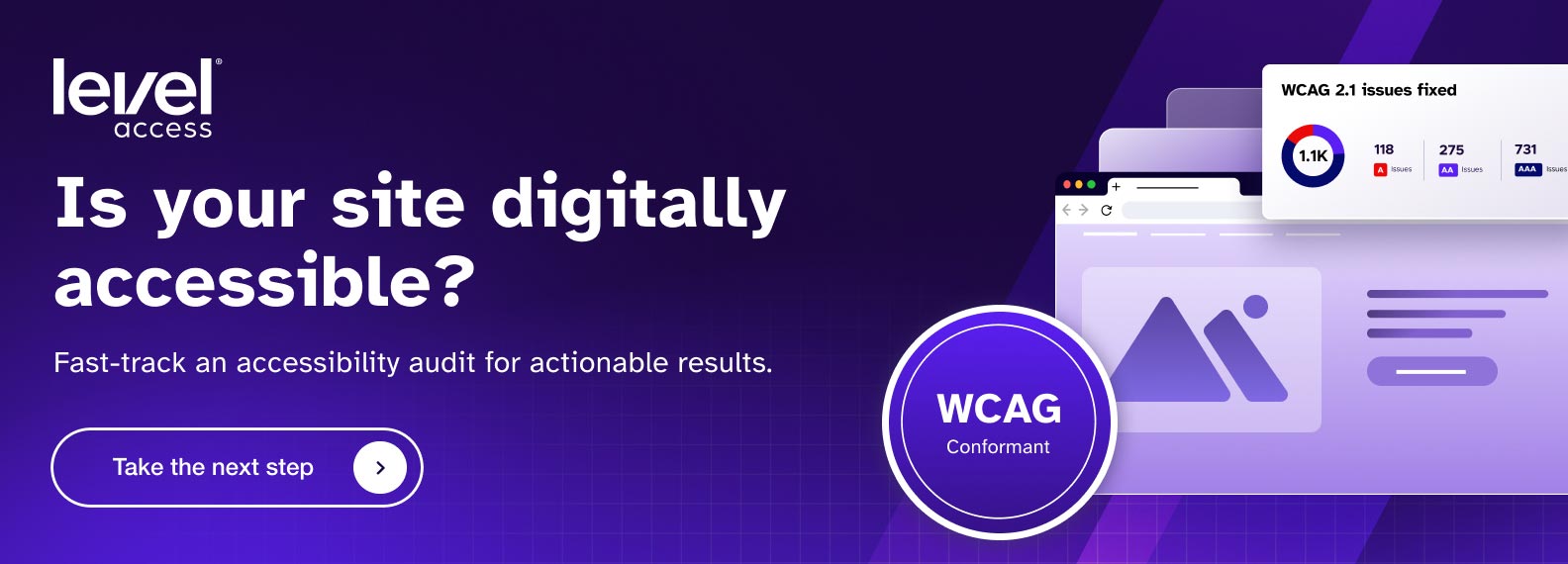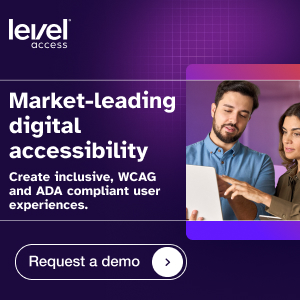How WCAG benefits everyone: A focus on neurodiversity and accessibility

Many success criteria in the Web Content Accessibility Guidelines (WCAG) focus on improving accessibility for users with visible disabilities, such as blindness, deafness, and limited mobility.
But conforming with WCAG benefits a much broader range of users, including individuals who are neurodivergent. Disabilities that fall into this category, like autism, dyslexia, and ADHD, are often invisible—but they can impact how users navigate and engage with the web. In this blog, we’ll explore how WCAG can be used to create digital experiences that embrace users’ neurodiversity.
What Is Neurodiversity?
Neurodivergence encompasses a broad category of disabilities and cognitive differences, including autism, dyslexia, and ADHD, that affect how individuals process information.
Neurodiversity refers to the natural variation in how human brains function.
The term neurodiversity emerged in the 1990s and has since grown into a movement that celebrates neurodivergence, rather than treating cognitive differences as flaws to be fixed.
Common barriers neurodivergent users face online
When websites aren’t designed with accessibility in mind, some neurodivergent individuals may encounter barriers that make it difficult, if not impossible, to use a site. Of course, neurodivergence is a broad spectrum, and whether a user encounters issues—and what types of challenges they face—depends on their unique experience of neurodivergence.
However, some of the most common accessibility barriers for neurodivergent people include:
- Sensory overload: Bright colors, flashing animations, or auto-playing audio can overwhelm some neurodivergent users, particularly individuals with autism.
- Difficult-to-read text: Many users, including some people with dyslexia, may struggle to read large blocks of text, complex fonts, or text with poor color contrast.
- Time constraints: Users with certain types of neurodivergence, such as ADHD, may find it difficult to complete tasks within strict time limits.
- Unpredictable navigation: Inconsistent layouts or unexpected layout changes can confuse some neurodivergent users.

WCAG success criteria that support neurodiversity
WCAG outlines tangible best practices to improve the accessibility of digital content for neurodivergent users. Here are six success criteria that can have a significant impact:
- 1.4.2 A: Audio Control
Auto-playing audio can be distracting or overwhelming for some neurodivergent users. WCAG requires that users have the ability to pause, stop, or control audio that plays automatically for more than three seconds. A simple solution is to avoid auto-playing audio altogether.
- 2.2.1 A: Timing Adjustable
Time limits can create unnecessary stress for users, particularly those with ADHD and / or dyslexia. WCAG recommends that website owners allow users to change or extend time limits, providing individuals with the flexibility they need to finish tasks.
- 2.2.2 A: Pause, Stop, Hide
Moving, blinking, or scrolling content can be distracting. WCAG-conformant experiences give users the option to pause, stop, or hide such content after five seconds. This is especially helpful for users with ADHD and / or autism.
- 3.2.2 A: On Input
Many neurodivergent users benefit from predictability. WCAG states that changes on a webpage should not occur automatically when a user inputs data. For example, selecting a checkbox shouldn’t trigger an unexpected action like submitting a form.
- 3.2.3 AA: Consistent Navigation
Consistency in navigation helps users understand where to find key elements like menus, search bars, and links. This can be particularly helpful for users with autism who prefer predictable layouts.
- 3.2.4 AA: Consistent Identification
Buttons, links, and icons with the same functionality should be labeled consistently across a website. For example, a “Submit” button should always be labeled the same way, ensuring clarity and reducing confusion.
Why accessibility for neurodivergent users benefits everyone
While WCAG guidelines are designed to support individuals with disabilities, including those who identify as neurodivergent, they ultimately benefit all users. For example:
- Clear navigation: Consistent layouts make it easier for everyone to find what they’re looking for.
- Readable text: High-contrast text and simple fonts improve readability for all users, not just those with dyslexia.
- Flexible timers: Adjustable time limits can not only reduce stress for users with ADHD, but also for anyone who needs extra time to complete a task.
How to get started designing for neurodiversity
Here are some actionable steps to make your digital assets more inclusive for neurodivergent users:
- Simplify layouts: Avoid clutter and use clear, consistent navigation.
- Use high contrast: Ensure text stands out against background colors.
- Provide text alternatives: Offer text transcripts for audio content and captions for videos.
- Test with neurodivergent users: Engage individuals who identify as neurodivergent to test the usability of your website.
- Educate your team: Train designers and developers on WCAG guidelines and the importance of designing for neurodiversity.
Inclusive design benefits everyone
WCAG is more than just a set of rules. It’s a roadmap to creating digital experiences that are easier for everyone to use. By following WCAG guidelines and addressing the needs of neurodivergent users, you can not only conform to accessibility standards but also provide better experiences for all visitors. Ultimately, you can help empower all people to participate fully in the digital world.
Related Posts
WCAG 2.2: New Success Criteria, More Inclusive Content
While the draft isn’t final, implementing the newly drafted 2.2 AA success criteria can’t hurt you, but it does have tremendous upside. First, 2.2 conformance...
Text over images: The impact on accessibility
Trends exist in every work environment. When it comes to design, the latest trends are often used by designers when creating content or updating a...
Five Most Common Accessibility Errors in Software Design and Development
Digital products start as a great idea, and make their way through analysis, design, implementation, and testing. But all too often accessibility considerations are overlooked. What...
